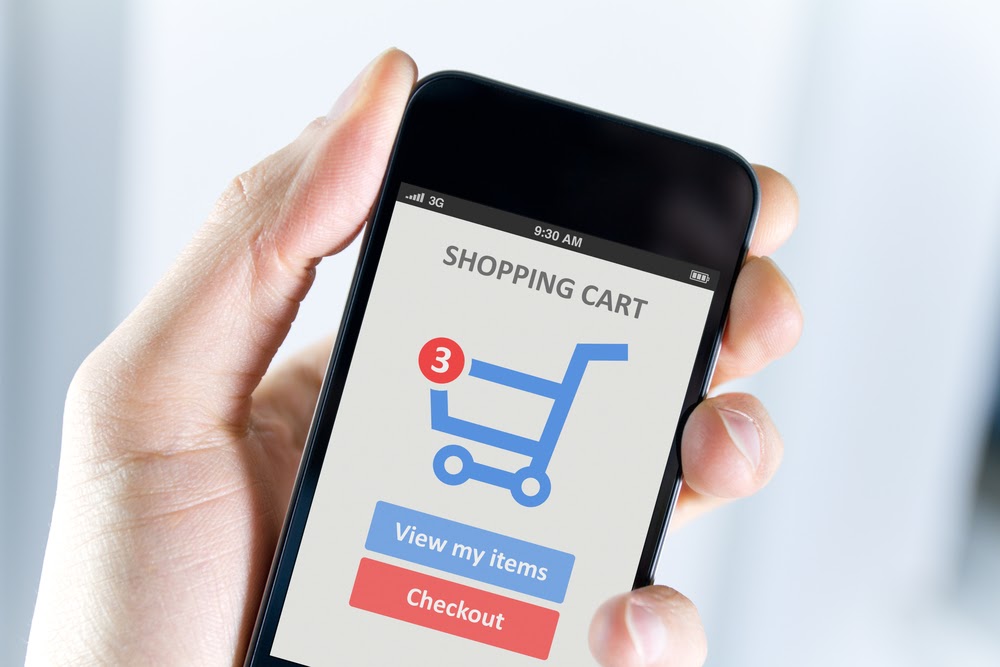Several trends are growing in the ecommerce industry. Here’s our list of the top ecommerce trends you should watch out for in 2021 and moving forward.
1. Personalization Will Grow Into Long-Lasting Customer Relationships
Personalization is a trend in the ecommerce industry that keeps evolving — from selling to the average joe to creating a personalized website experience to building strong customer relationships.
Personalization aims to improve ecommerce growth by offering customers a shopping experience that’s unique to each person. That, in turn, results in customer trust and satisfaction, leading to repeat purchases and a loyal customer base.
While having the best homepage design helps, it is through well-built relationships with your audience that your business will thrive. HubSpot backs that up. It found that personalized call-to-actions convert 202% better than those that are not personalized.
That shows people crave customized communication and are more likely to buy from businesses that use personalization. So much so that according to Smarter HQ, 90% of consumers will share behavioral data with a brand to receive a buying experience tailored to their needs.
This ecommerce trend brings a great return on investment (ROI) for marketers. On that note, Kibo states that 70% of retailers that use advanced personalization features have an ROI of up to 200%.
So, don’t miss out on this trend in ecommerce if you want to take your online business to the next level.
2. AI Will Become More Natural and Credible
Artificial intelligence (AI) is an advanced technology that attempts to resemble humans in every way but their flesh and blood.
Even though most people associate AI with things like Terminator’s Skynet, it’s not as much a threat as people may think. In fact, AI has found its way into a myriad of ordinary day-to-day company applications, helping ease and expedite processes.
These include but are not limited to:
- Cash registers in mortar stores.
- Checkout systems online.
- Dynamic email categorization.
- Autocorrect keyboard functions.
AI’s ability to optimize processes and produce effective results efficiently translates well to the ecommerce industry. For that reason, AI has become a fast-growing ecommerce trend with over $34.87 billion in global market revenue.
After all, AI is everywhere — whether it is voice searches, chatbots, transaction processing, or other online shopping applications.
But that’s not all AI can do for your ecommerce website. It can also:
- Tackle spam reviews.
- Flag down counterfeit products.
- Create a more seamless customer journey.
- Help online stores learn more about their shoppers.
Moreover, machine learning provides online retailers with insights resulting from the data generated when customers use their ecommerce website. That way, store owners can make better predictions and decisions.
Overall, this ecommerce trend has helped a significant number of brands with their business. For instance, ecommerce platform Wayfair achieved a 50% increase in sales success rate in 2020 by using AI to improve its online shopping.
Other big companies like Etsy, Walmart, and Pinterest now use AI to improve their brands’ personalization, ecommerce experience, and sales.
3. Social Media Will Bring Big Ecommerce Sales
With over 3.78 billion social network users, making social media an essential part of your digital marketing strategy will bring massive ecommerce sales.
Social media is a part of our daily lives and plays a significant role in ecommerce businesses by changing how we buy things. For that reason, several companies are taking to social media platforms as a necessary marketing channel for their products and services.

In response, social media channels continue to make provisions for the growing number of influencers and shoppers. For example, Facebook has the Marketplace feature, and Instagram Shop and Checkout are available too.
TikTok, the popular video-sharing app that now has about 700 million active users, started working on ecommerce features for the platform in early 2021.
Since it shows no signs of slowing down, we suggest you take advantage of this ecommerce trend by integrating social media when you create an online store.
4. Augmented Reality (AR) Will Change the Purchase Game
Augmented reality (AR) is one of the top trends in the ecommerce industry that you should take advantage of for your online store efforts.
AR is an interactive version of the real world where brands display an enhanced version of physical objects through digital visual elements, sound, or other sensory stimuli such as haptic AR and smell delivered via technology.
It lets you experience things in the physical world through different devices. Sometimes AR can be as simple as Snapchat filters or as complex as animated holograms, interactive displays, and virtual 3D models.
AR is a top trend in ecommerce, and it continues to grow, with over 810 million people actively using mobile AR.
But why is that the case?
Although online shopping is common these days, shoppers still fear purchasing online products without seeing the product before buying it.
Several “what I ordered versus what I got” pictures on the internet make online shoppers’ concerns valid.
However, AR helps fill that gap. The ecommerce trend lets buyers observe and experience products in realistic ways before they purchase them. Brands are going even further by using AR in social media filters and preview placements.

For example, We MakeUp, an Italian cosmetics brand, created an AR filter to let users try different lipstick shades before deciding which one to buy. Also, IKEA launched an app that virtually empowers potential customers to set up furniture and accessories in their homes.
AR is a very lucrative ecommerce trend, with Statista forecasting that the value of AR technology will hit $18 billion by 2023.
A USA AR retail study supports that, revealing that 71% of consumers will shop more often if brands embrace AR technology, and 40% of them are ready to pay more for this feature. AR is one of the ecommerce trends expected to grow in leaps and bounds.
5. Voice Search Will Become a Big Deal in Online Shopping
Voice-activated technology is a big part of our daily lives and an ecommerce trend that has come to stay. We have voice assistants that many people cannot do without, like Amazon Alexa, Google Assistant, Siri, Samsung Bixby, and Cortana.
Voice search is breaking quickly into the ecommerce market, and many brands have begun to hop on this ecommerce trend to improve their customer experience and online sales.
For example, Domino’s has started taking its orders via voice-operated customer interface systems.
Likewise, Johnnie Walker has taken the voice search feature to an advanced level. The brand suggests to its customers the most suitable drink for them through conversations with a virtual assistant.
One of the reasons why this ecommerce trend works is that it’s more convenient than typing. The average person can speak up to 100 words per minute compared to typing, which adds up to roughly 35 words per minute.
More people will embrace voice searching for ecommerce. Voice shopping is an ecommerce trend that is estimated to reach $40 billion by 2022.
6. Chatbots Will Keep Online Shoppers Company
Chatbots are another ecommerce trend, and they’re an excellent tool brought by AI.

As the name implies, a chatbot is a program that begins a conversation with a user in natural language through messaging applications, websites, mobile apps, or via phone.
Features like chatbots help take your website’s personalization beyond simply creating a new website design. Chatbots keep users engaged while providing them with the customer support and guidance they need.
Just think about it.
What’s better than a support agent that immediately addresses customer needs across multiple platforms and never sleeps?
On top of that, chatbot AI can use data to predict customer preferences and create valuable, individualized shopping experiences.
Many ecommerce sites are using this popular ecommerce trend for their businesses. Staples uses Facebook Messenger to offer customers product recommendations based on their requests and past orders. In addition, the bot enables shoppers to complete their purchases from the chat.
H&M has a chatbot on Kik that asks users questions about their style and offers photo options for them to select. The bot uses the information to create a fashion profile of each user to make outfit suggestions and direct the user to purchase the clothing.
There is a wide selection of things you can do with this ecommerce trend, and the numbers of what this trend will achieve in the future are high. According to Grand View Research, the global chatbot market will reach $2.486 billion in 2028.
7. Green Consumerism Will Influence Buying Decisions
Since change is constant, ecommerce products, shoppers, and the way we buy continue to evolve.

The new generation of buyers — millennials and Gen Z — don’t just want quality interactions with brands. They also want products that guarantee environmental safety.
Buyers are now interested in purchasing from brands that put the planet first. That is why green consumerism is now a significant trend in ecommerce.
According to GWI, 60% of consumers will pay more for eco-friendly products. Environmental topics and actions such as climate change, recycling, vegetarianism/veganism, and so on are actively affecting buyers’ decisions.
Green consumerism has grown among several brands, not just those that sell food products. Several brands use this ecommerce trend. For example, Amazon made a climate pledge and also became the world’s most prominent corporate buyer of renewable energy.Green Toys also makes toys that are 100% recyclable and beneficial for the community.
Ecommerce businesses should increase their sustainability and environmentally friendly efforts to join this ecommerce trend called green consumerism.
8. Omnichannel Shopping Will Be Everywhere
Omnichannel shopping is a crucial ecommerce trend to watch out for. Marketers using multi-channels have seen a 287% increase in sales than those using single channels.
Omnichannel shopping empowers you to increase sales by catering to potential customers on different channels. To take advantage of it, you have to design your website in a way that provides customers with a seamless experience no matter how they’re buying your products — via phone, online, or even a physical store.
You can also offer customers online and offline omnichannel support via live chat, help desk, instant messaging, and CRM tools to personalize information and suit your audience’s profiles.
9. Headless and API-Driven Ecommerce Will Reign
Headless commerce occurs when the front-end layer of a website is separate from the back-end functionality.
Usually, the back end controls the front end of a website. So, even if you customize the front end, it cannot go beyond what the back end approves. But with this ecommerce trend — headless commerce — you can get an extensive range of options in terms of usage and functionality.

API, which stands for application programming interface, refers to when one software interacts with another.
For example, Expedia uses an API to extract information from the user’s search queries and flight-related data in airline databases.
Headless commerce and API can revolutionize the ecommerce industry, which is why they are a part of the core ecommerce trends to adopt.
10. Videos Will Be a Strong Ecommerce Marketing Strategy
Videos are great from a marketing and general perspective. They are an ecommerce trend that will grow stronger and stronger.
According to Stacks and Stacks, website visitors were 144% more likely to purchase a product after viewing its video content than those who didn’t.
Video is here to stay, and we expect online stores in every sector to incorporate this ecommerce trend as a part of their marketing strategy to grow their business and revenue.
11. Ecommerce Brands Will Make Subscriptions Essential
Subscriptions are one of the fastest-rising ecommerce trends. Subscription-based ecommerce is a business model that enables customers to subscribe to products or services they need repeatedly.
According to UnivDatos Market Insights, the subscription ecommerce market will reach $478.2 billion in 2025, with a compound annual growth revenue of 68%.
This ecommerce trend lets you leverage personalization, segmentation, and consistency with your current and potential customers.
Subscription ecommerce lets you build genuine customer relationships and improve your sales and customer retention rate. Overall, this ecommerce trend is more profitable long-term because you have a loyal customer base you can cater to in every way.
12. Online Shopping Will Become a Lot More Mobile
Did you know that over 4.32 billion mobile users and retail mobile commerce (mcommerce) have generated more than $338 billion in sales?

In the past, most people would never have thought we’d send letters through mobile devices, let alone access TVs, workstations, music libraries, bookshelves, banks, and online stores through them.
More than being an ecommerce trend to watch out for, mobile shopping is the reality we live in, and it continues to expand to this day.
In this way, mcommerce is very close to completely dominating the ecommerce field. Business Insider Intelligence forecasted that mobile commerce would hit $284 billion in revenue by the end of 2020 and $488 billion in 2024.
This ecommerce trend has come to stay as it allows for quick and easy shopping.
13. Ecommerce Will Go Beyond B2C
Ecommerce is growing beyond the business-to-consumer (B2C) industry. Therefore, brands in other sectors must optimize their digital marketing strategy to boost conversions.
When shoppers visit Amazon — one of the top ecommerce sites by sales — they can easily find product listings, add products to carts, and make a purchase.
Similarly, manufacturers, retailers, business-to-business (B2B), direct-to-consumer (D2C), and direct-to-business (D2B) brands are bringing this ecommerce trend to reality with website optimization for increased conversion rates.
You can use this ecommerce trend for your online store regardless of your business type by:
- Creating an online catalog for your products.
- Simplifying your checkout process and payment gateways.
- Implementing good website design tips.
- Posting relevant content to promote your products further.
- Optimizing your website copy for search engines and conversions.
- Creating a one-page website to test what works.
- Building a marketing funnel that combines your email, social media, and content marketing strategies.
Several ecommerce sites in various sectors use different processes to improve their conversion rates. However, keep these tips in mind when building an ecommerce website.
As things continue to develop, this ecommerce trend will get stronger.
from: https://www.nexcess.net/blog/top-ecommerce-trends




